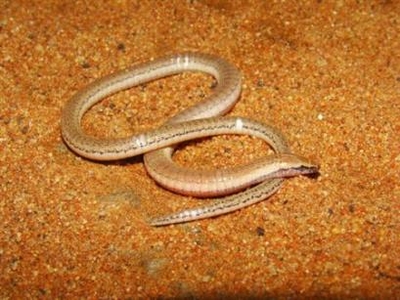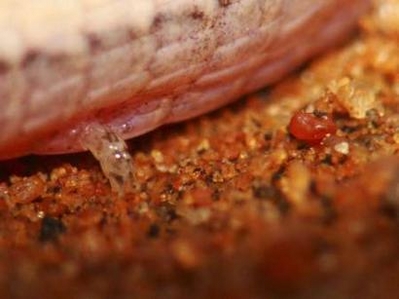

And I’m definitely not using the legs from this lizard and the lungs from this frog to make some sort of supermonster. So don’t get any ideas. But stay away from the Seattle sewers for a few years.
Legless lizard found in Brazil may be new species
By Alister Doyle, Environment Correspondent Tue Apr 29, 12:17 PM ET
OSLO (Reuters) – Scientists have discovered a legless lizard, a toad and a dwarf woodpecker among 14 species believed to be new to science in central Brazil, a wildlife conservation group said on Tuesday.
A four-week expedition to the Cerrado region, a wooded savannah under threat from the expansion of farming, found eight apparently unknown types of fish, three reptiles, one amphibian, a mammal and a bird, Conservation International said.
“The lizard, of the Bachia genus, resembles a snake due to its lack of legs and pointed snout, which help it move across the predominantly sandy soil,” U.S.-based Conservation International, a non-profit group, said in a statement.
Susan Bruce, a spokeswoman for Conservation International, said the lizard was about 15-20 cm (6-8 inches) long. Other legless lizards around the world include ones related to geckos in Australia or slow worms in Europe.
The lizard was found during the expedition to the Serra Geral do Tocantins Ecological Station, a 716,000 hectare (1.77 million acre) protected area in the Cerrado.
Other suspected new species include a dwarf woodpecker and horned toad. Conservation International seeks to preserve biodiversity and argues that human societies can live in harmony with nature.
“Protected areas such as the Ecological Station are home to some of the last remaining healthy ecosystems in a region increasingly threatened by urban growth and mechanized agriculture,” said expedition leader Cristiano Nogueira.
The Cerrado region, part of Brazil’s central high plains region that once covered an area half the size of Europe, is being converted to crops and ranch land at twice the rate of the nearby Amazon rainforest, Conservation International said.
The expedition also recorded threatened species such as the three-banded armadillo, the marsh deer and hyacinth macaw among more than 440 species documented in the expedition comprising 26 researchers. — (Editing by Giles Elgood)




